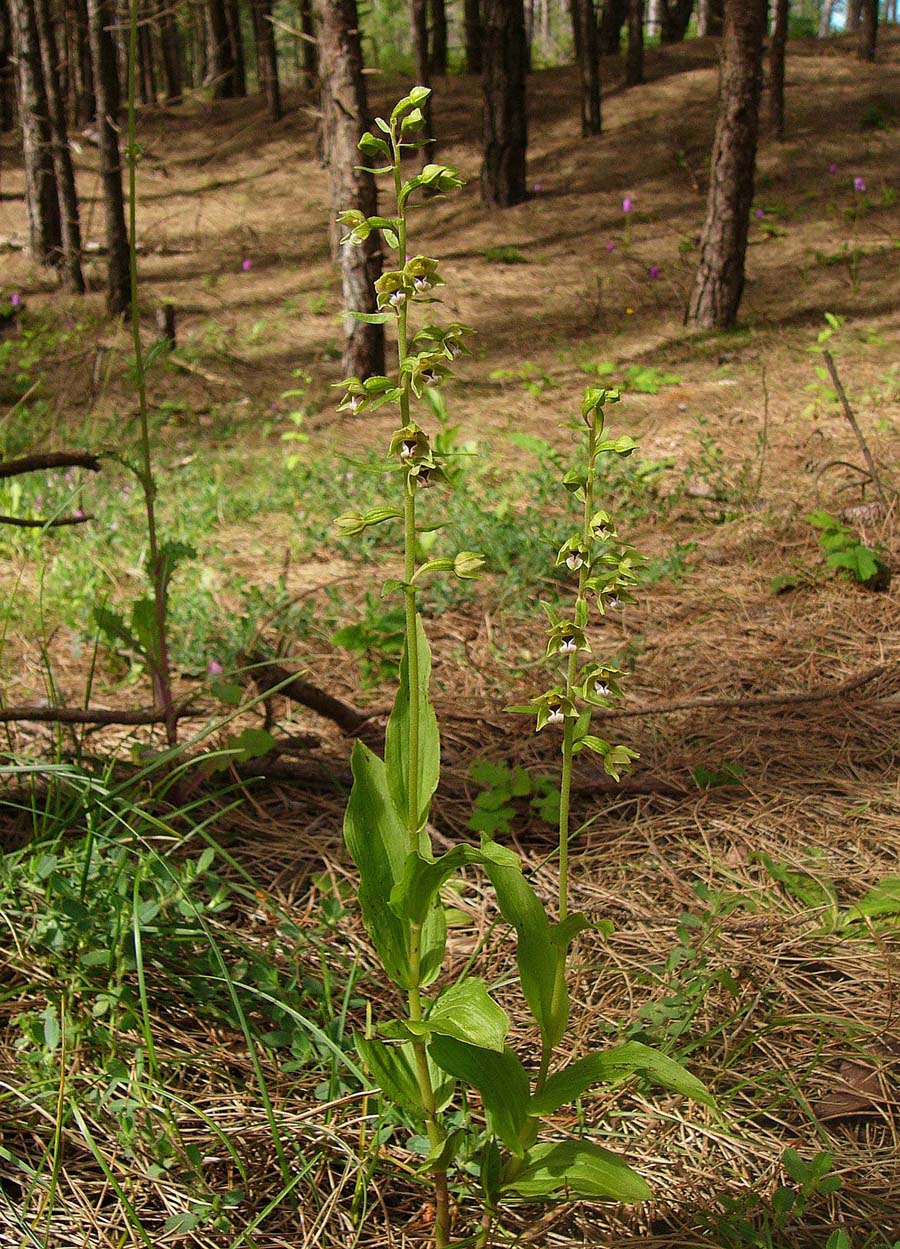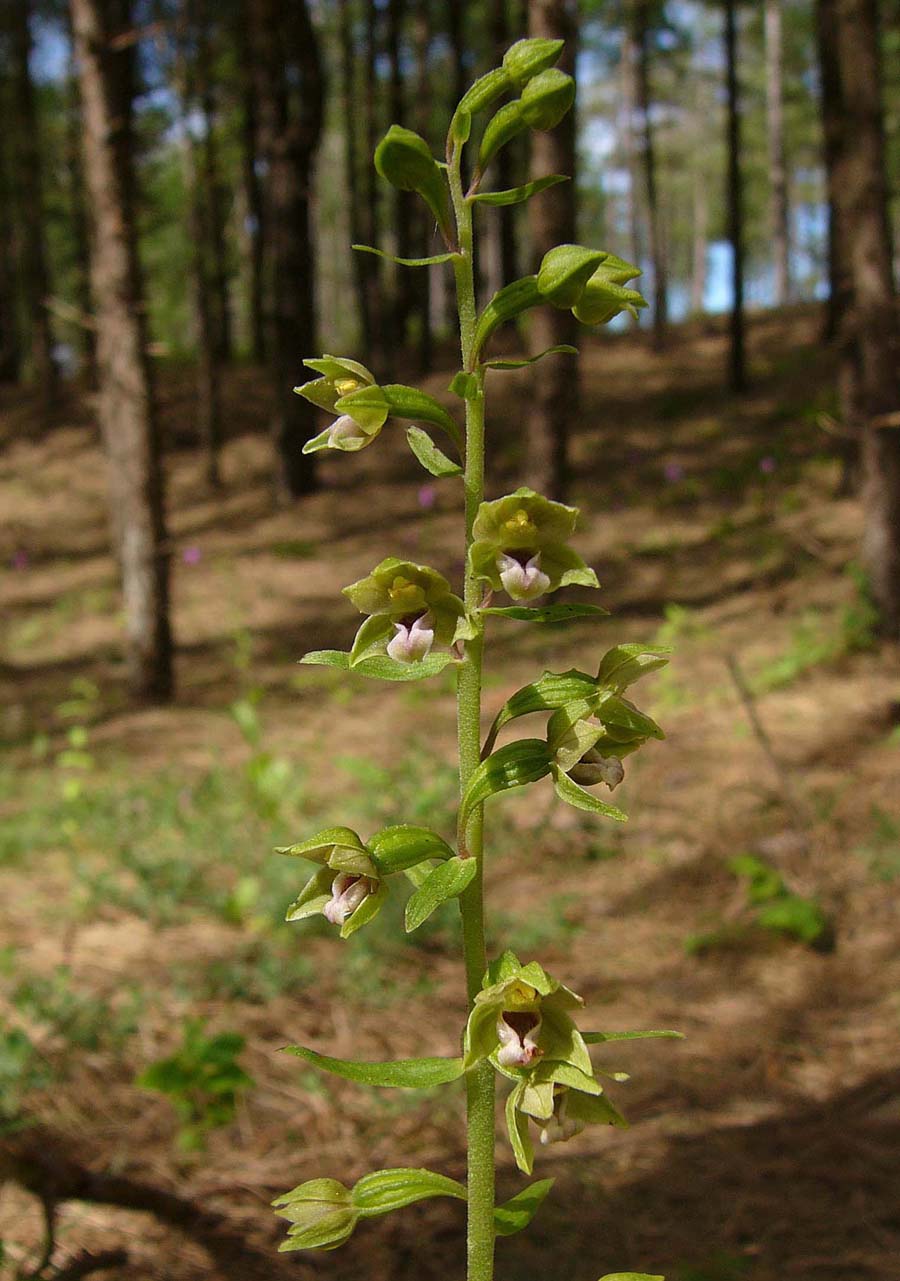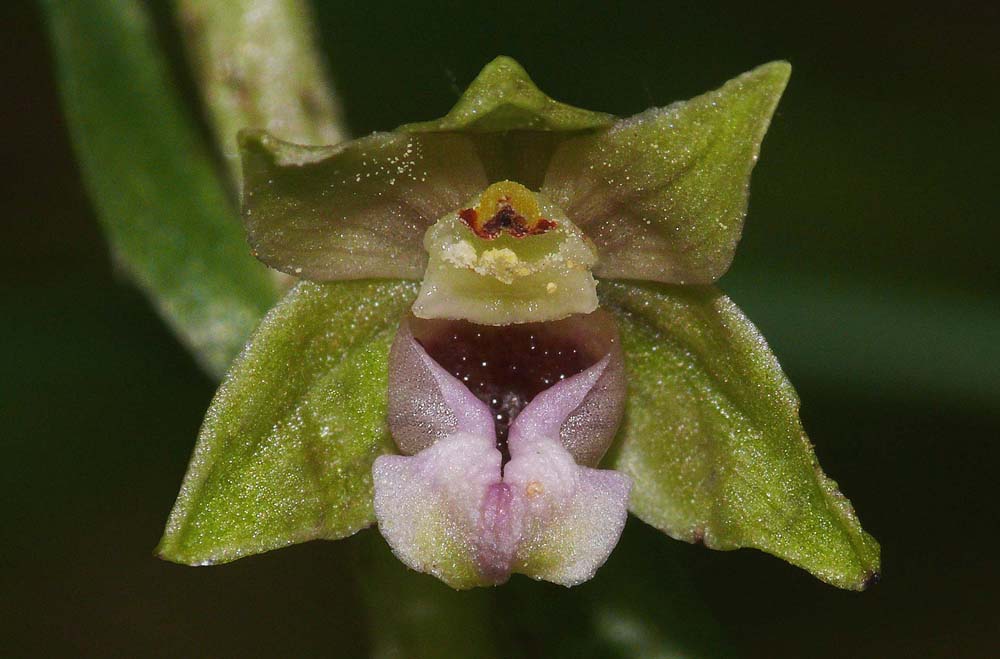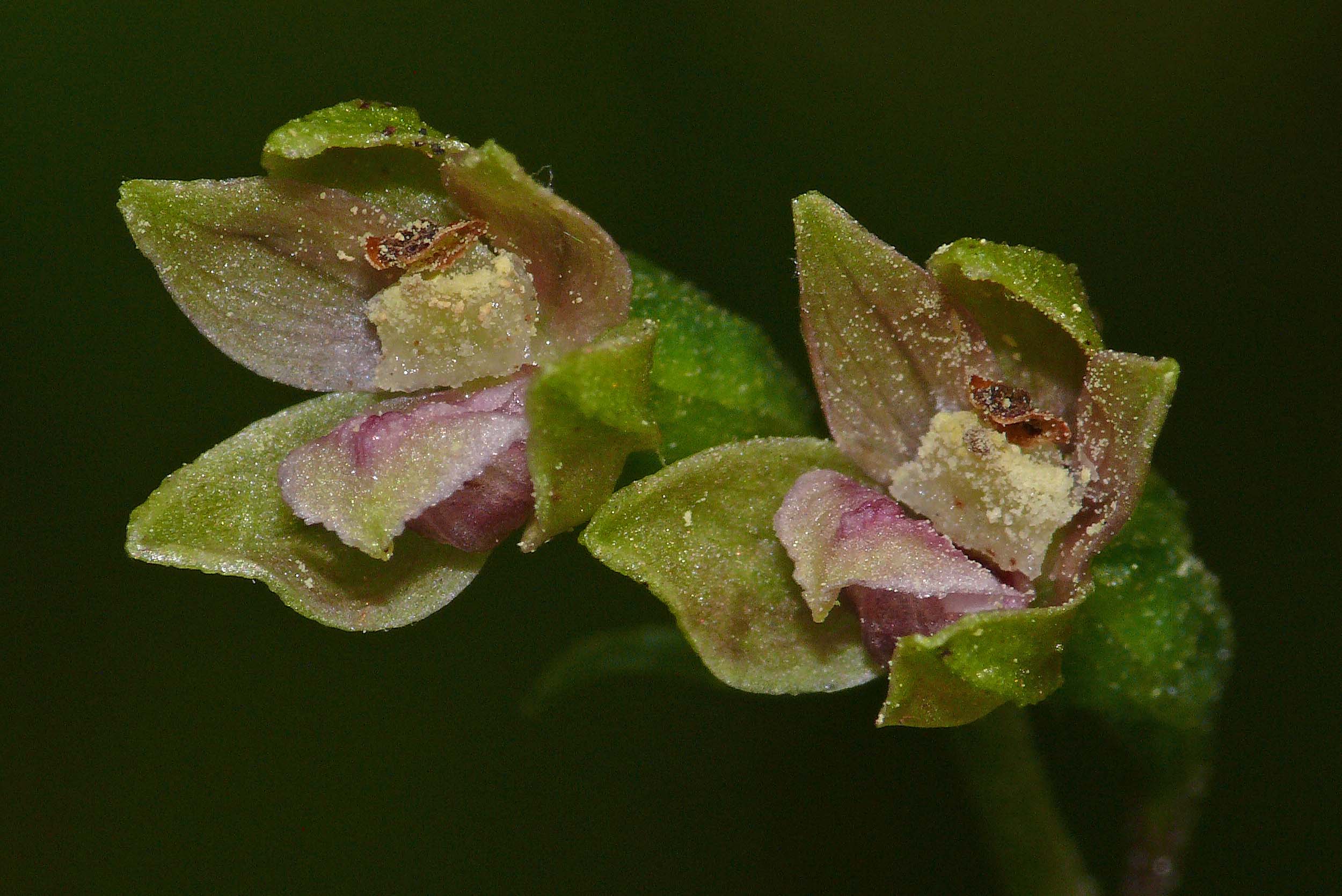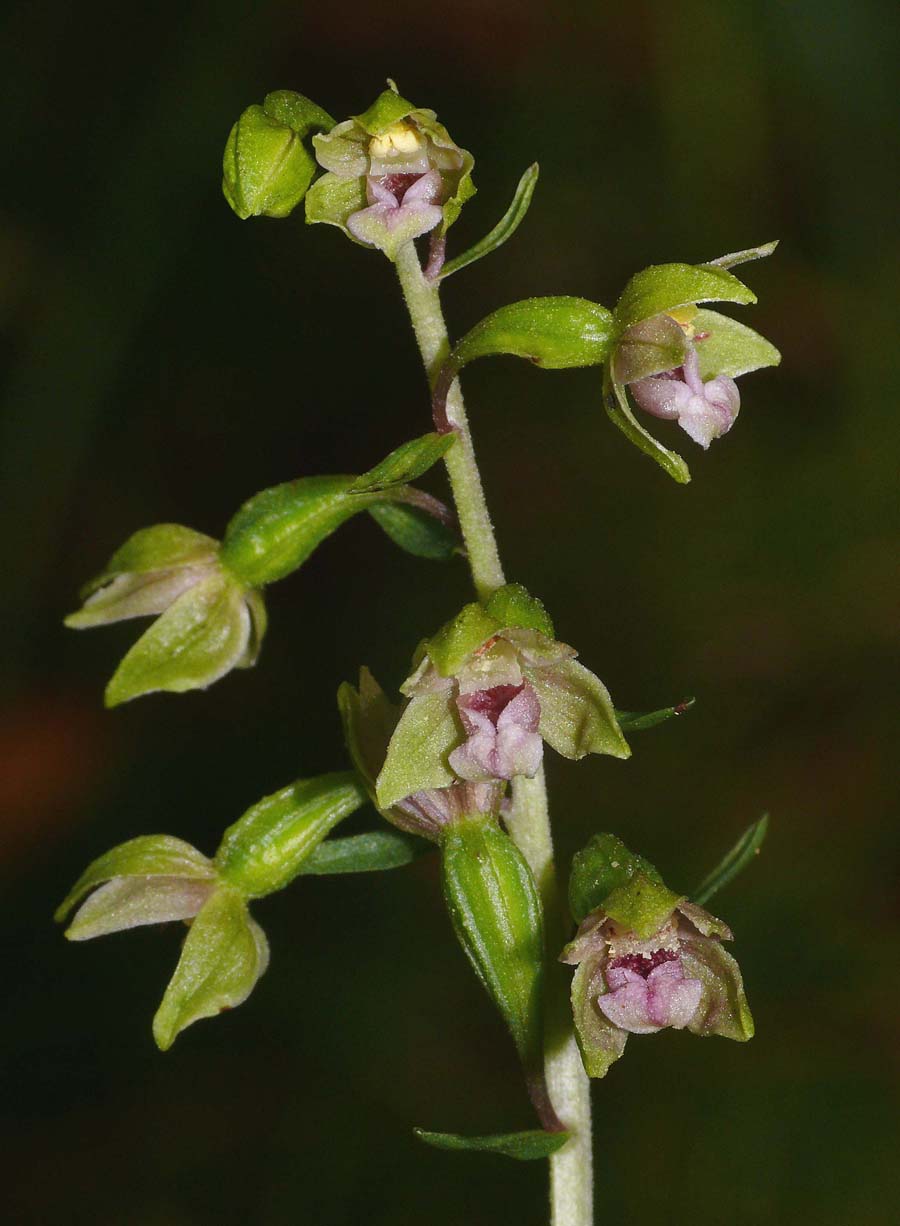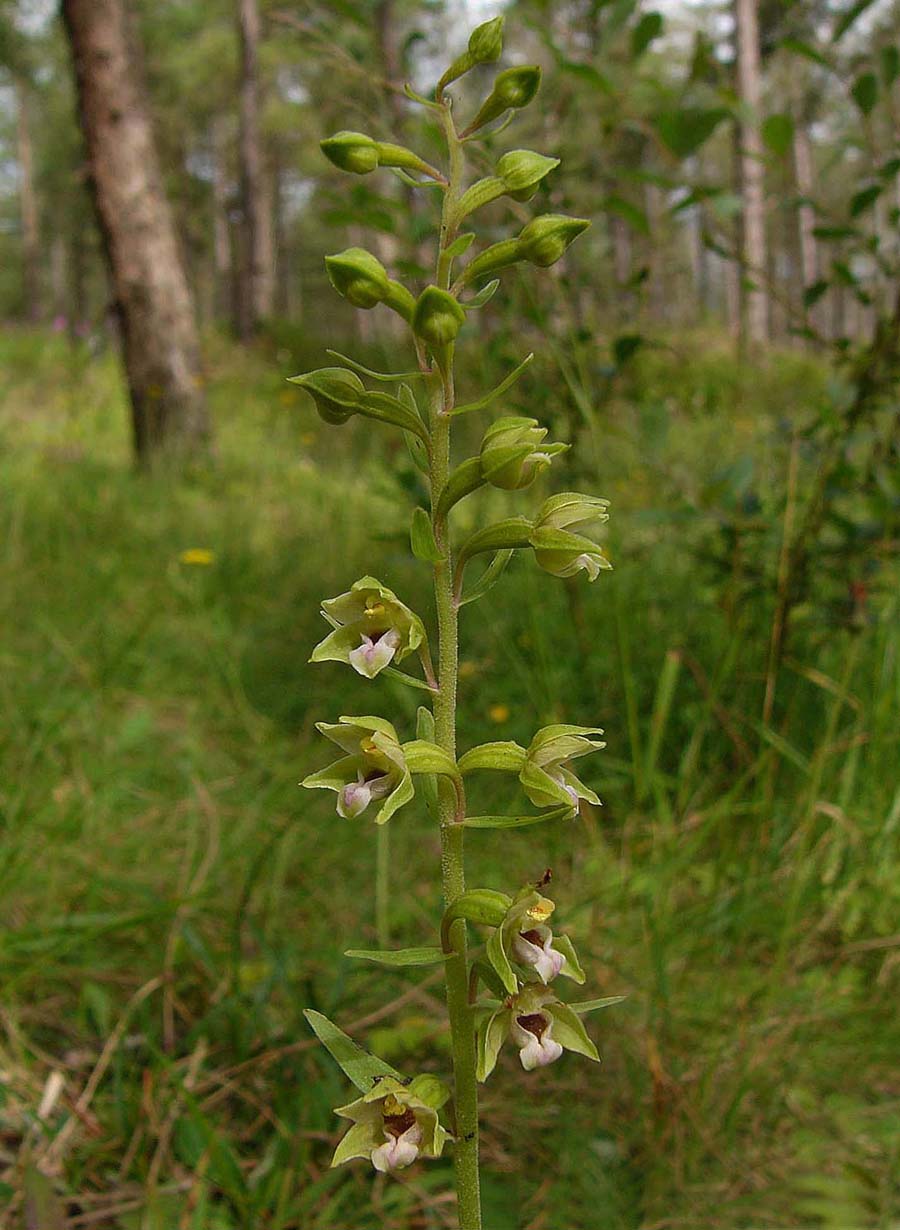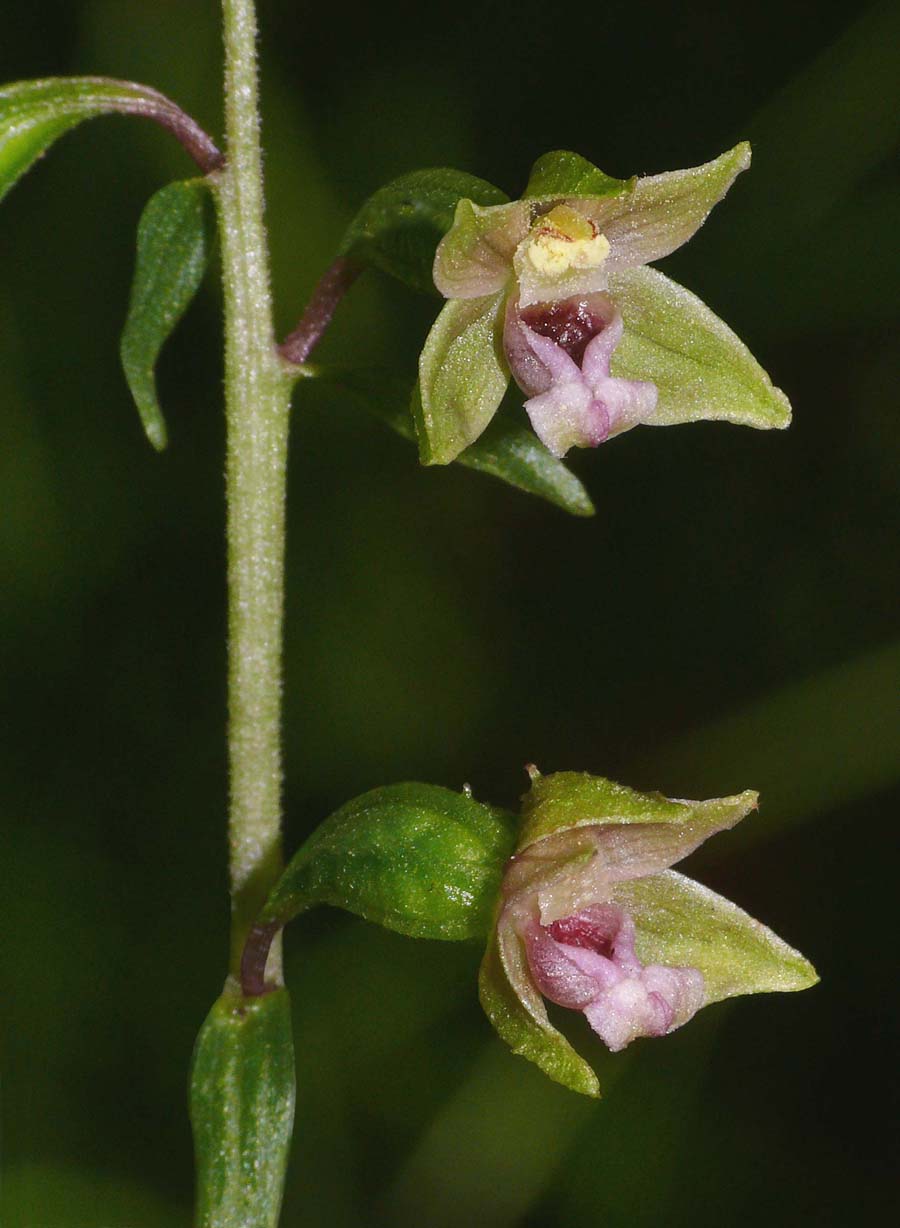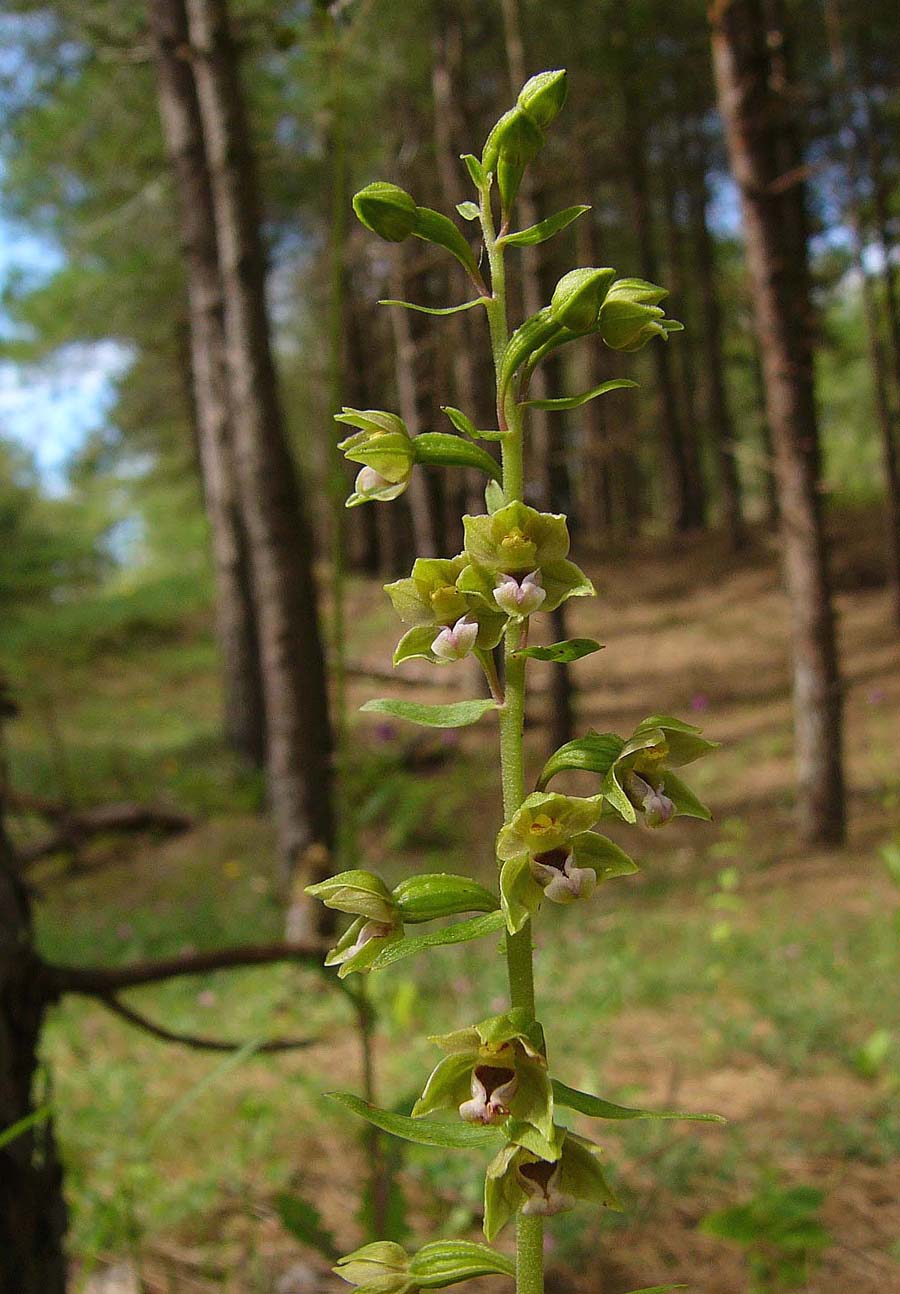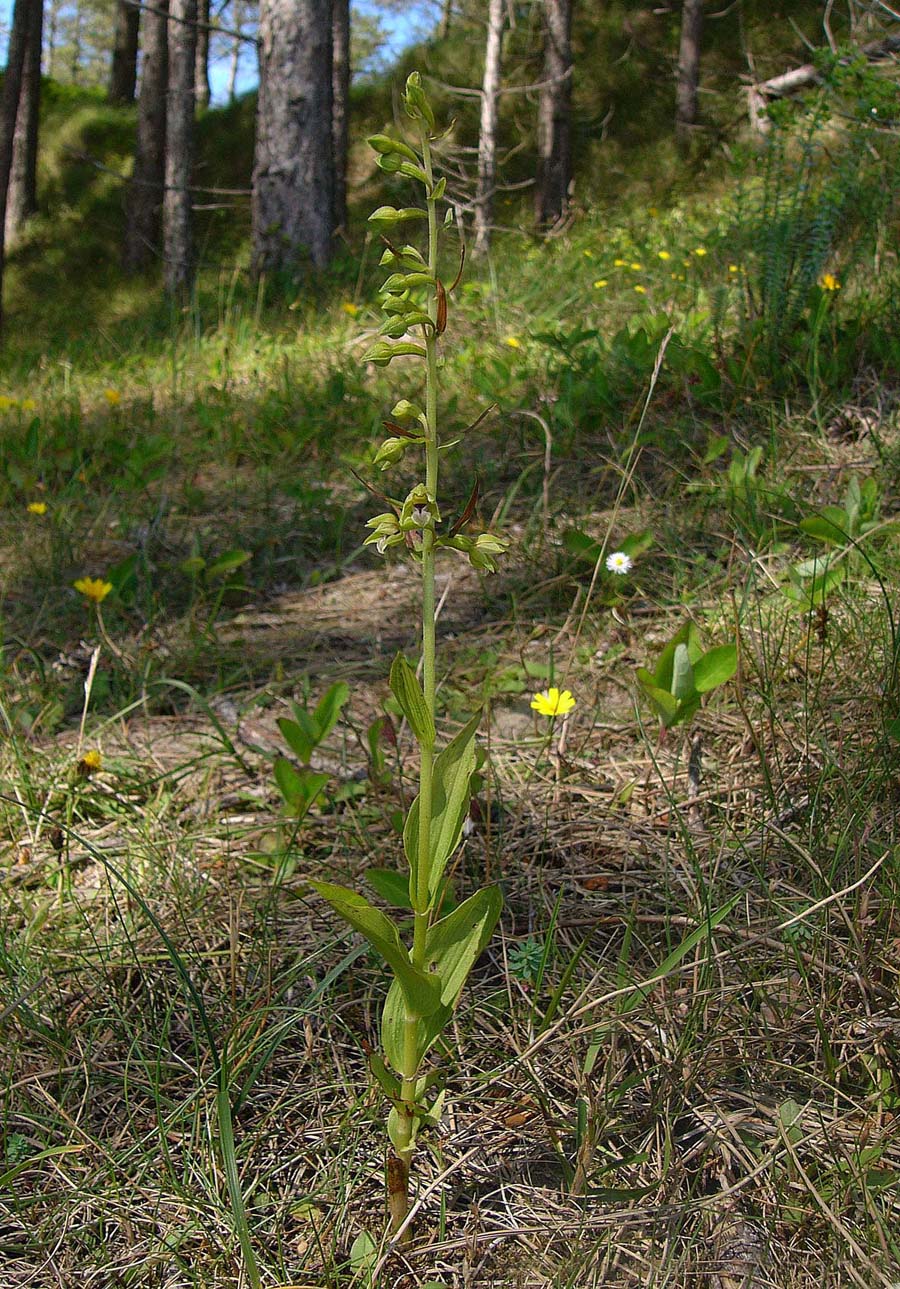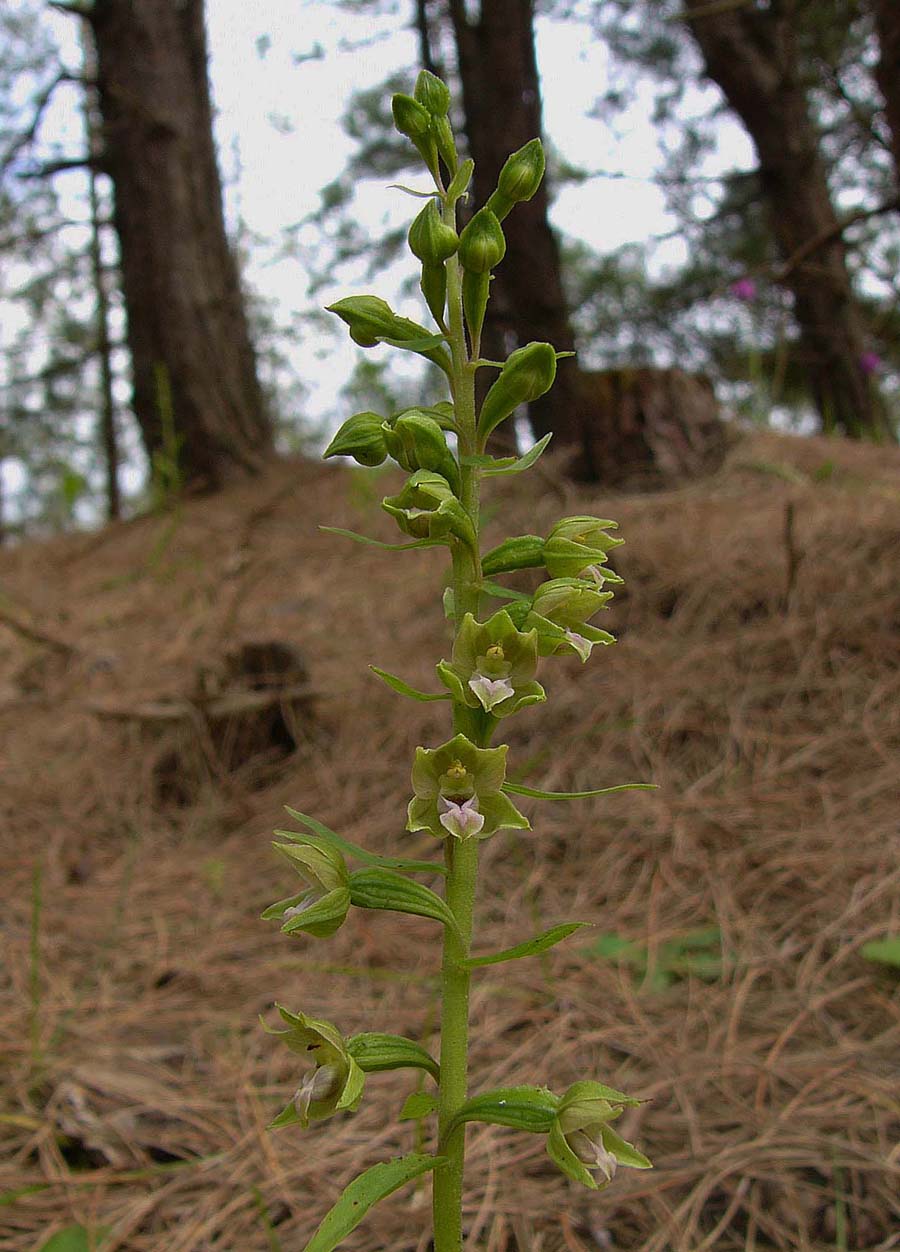This species was first described
from Lancashire, England in 1918 and as it name suggests, is largely
though not exclusively an orchid of sand dune systems, primarily in the
north west of England and Wales. E. dunensis cannot
be described as one of our more attractive European orchids
and the fact that the flowers never fully open serves only to
add to its general lacklustre character.
The sepals and petals never
completely reflex and remain in a forward pointing position, thereby
partially shielding the heart shaped epichile. This has no particularly
detrimental affect on the species as it is a self pollinator (autogamus) with no
need to attract any insect partners.
The
common name for this orchid is
unsurprisingly the Dune Helleborine but unlike most of its fellow dune
dwellers, does not favour the damper slacks, tending to
grow on higher, stabilized ground amongst willow scrub
or pine plantations.
Plants growing in open situations can be relatively weedy and
yellowish whereas those from shadier areas are
sturdier and more colourful.
The form growing amongst the pines has been formally differentiated as f. pinetorum. This species was first thought to be restricted
to
the north western coastlines of England and Wales but there have
now been several recent discoveries of the orchid in other parts of the
UK, some of these locations being far from the coast. These discoveries
all relate to f. pinetorum. There are two recognized subspecies of E. dunensis namely subsp sancta from Holy Island, Lindisfarne and subsp tynensis from the North East of England.
The photographs here are all f. pinetorum and come from Newborough Forest in North Wales and Ainsdale Dunes in Lancashire, dating from the first week of July.
